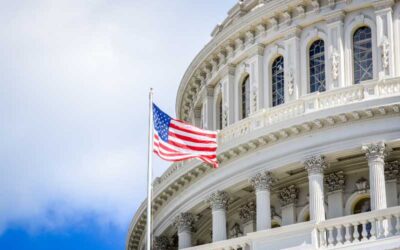Taxpayers claiming the federal Research and Development (R&D) credit on amended returns will get an extended break from new documentation requirements. The grace period for submitting incomplete or incorrect refund claims was set to expire in January 2023. This meant that any claim which did not meet the new requirements, even if otherwise prepared correctly, would be denied. This created significant concern as many believed a longer transition period was necessary to ensure familiarity and compliance with the new regulations. The good news is the IRS announced earlier this month that the deadline has been extended for another year. This provides the additional time to adjust to the new IRS rules. To help clients, prospects, and others, Smith Schafer has provided a summary of key details below.
R&D Credit Refund Claims
The R&D credit, also referred to as Section 41, is a dollar-for-dollar federal tax credit against eligible research expenses. To qualify, projects must meet the four-part test:
- Technological in nature, with a
- Documented goal or outcome, that’s part of
- An experiment to create or improve a product or process functionality, performance, reliability, or quality, and is
- Intended to eliminate uncertainty.
When determining whether a project meets the four-part test, it’s helpful to consider whether it was based on a hard science, like engineering, physics, chemistry, biology, life, or computer science. There does need to be a certain degree of uncertainty at the beginning, and the goal or problem the project hoped to solve should be written down and clearly documented. A process that followed trial and error or considered several different alternatives, including an iterative process, simulation, and modeling would meet the experimentation requirement. The process does not need to be completely academic, but documentation on the considered alternatives including testing methodology and results may be needed.
Certain projects, like surveys, employee training, regular process improvements, and some research studies are ineligible. Projects without a documented purpose or goal will not meet the four-part test, nor will projects that are based in social sciences, arts, or humanities.
When it works, the R&D credit is a valuable, flexible tax incentive. Taxpayers can take the credit even in years where there is a loss. In addition, the credit can be carried forward up to 20 years.
Traditionally, the R&D credit is worth 20 percent of qualified expenses above a fixed base percentage. The regular research credit is available to taxpayers with more than five years of R&D expenses. First-time R&D filers or taxpayers without annual R&D expenses going back at least four years can use the alternative simplified credit. That approach produces an either 6 or 14 percent credit against current year expenses, depending on whether there are at least three years of research expenses to average or not; the smaller credit amount is what first-time filers would likely use. There are other options, too.
Newer additions to the R&D credit have opened opportunities for smaller and start-up companies. Section 41 can be taken against payroll taxes or a taxpayer’s alternative minimum tax (AMT) liability.
Offsetting the payroll tax only applies to the employer’s portion of social security tax, up to $250,000. Eligible taxpayers have less than $5 million in gross receipts for the year the credit is claimed and no more than five years of gross receipts total, including the current tax year. New businesses can use this approach for up to five years, up to $1.25 million total.
To apply the R&D credit to AMT liabilities, the taxpayer must be a qualified small business with $50 million or less in average gross receipts over the last three tax years.
Documentation has always been a cornerstone of claiming the R&D credit refund. Taxpayers must prove the project passes the four-part test and provide proof of qualified expenses, like payroll, invoices, contracts, parts, and more.
New Information Requirements for R&D Credit Claims
In 2021, the IRS implemented new documentation requirements for R&D credit refund claims. To help taxpayers ease into the changes, the agency initially provided a one-year grace period, during which time taxpayers would be allowed to correct incomplete or otherwise erroneous refund claims.
In addition to passing the four-part test and submitting all other necessary documentation, taxpayers are now required to submit and separate certain pieces of information. These include identifying or listing all:
- Business components
- Research activities performed under each business component
- Individuals involved in the research for each business component
- Information the individuals sought to discover
- Qualified expenses for wages, supplies, and third-party contracts
A business component is defined as “any product, process, computer software, technique, formula, or invention which is to be held for sale, lease, or license, or used by the taxpayer in a trade or business of the taxpayer.” The research activities need to describe what the individuals did and how they did it. Titles and positions can be used in place of names. Taxpayers should be aware the IRS can request more information and may ask for specific names, if not included in the application. For this reason, applicants are encouraged to keep detailed records just in case.
If individuals shared a common goal under a business component, they can be listed as one group. In the event there is more than one person who holds the same position, the total number of people with that role or job title must be indicated.
Eligible expenses should be listed on Form 6765. It’s up to the taxpayer how to provide the rest of the information; the IRS has said that a narrative, table, or list are all acceptable formats.
The new information requirements only apply to R&D credit claims on amended returns, not new R&D refunds in the same tax year.
Transition Period
Recognizing that there would likely be a learning curve in adapting to the new information requirements, the IRS gave taxpayers one year to submit complete, accurate refund claims. During this transition period, if the IRS found a refund claim to be deficient, it would notify the taxpayer.
Since the IRS issued its revised guidance, taxpayers have had 45 days to correct deficiencies in R&D credit refund claims. After January 4, 2023, the IRS was set to let the transition period expire. After that point, any incorrect refund claims would be denied without the opportunity to self-correct or appeal.
Certain partnerships should use Form 8985 for pass-through entities, and Form 8986 would go to the partners. The five items of information don’t need to be included on these forms. S-corporations should continue to file an amended return to claim the research credit.
As of September 30, 2022, taxpayers will have until January 10, 2024 to perfect deficient R&D credit refund claims. They will still have 45 days to respond if the IRS determines there are any errors.
Contact Us
The recently announced extension is welcome news to Minnesota businesses eligible for the federal R&D tax credit. The additional time will ensure that the credit is not denied simply because of a compliance or filing error. If you have questions about the information outlined above, or need assistance claiming the R&D credit, Smith Schafer can help. Contact us today to schedule a consultation with one of our experts.



